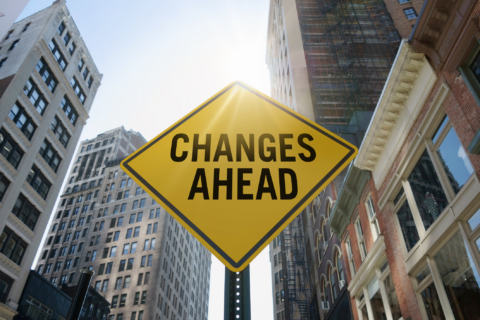Authored by Camryn Banks, Cities of Opportunity Fellow and edited by Sarah Weller-Pegna
Mental health crises among LGBTQIA+ youth are often imagined in their most visible forms — running away from home, familial rejection or distress over social media. While these situations deserve urgent care and attention, a quieter crisis is unfolding among LGBTQIA+ teens who have supportive homes, attend school regularly and appear to be functioning well overall. Beneath the surface, these young people often wrestle with deep isolation, anxiety and depression, sometimes leading to suicidal ideation or attempts due to difficult experiences around gender and sexuality. As cities across the country work towards greater health and well-being for all residents, this must include mental health strategies that support those who are silently struggling.
Struggles in Plain Sight: Why LGBTQIA+ Mental Health Matters for Cities
Teen mental health is not an isolated issue — it is a community issue. Youth who feel safe, affirmed and supported are more likely to engage in school, avoid substance misuse and contribute positively to their communities. When LGBTQIA+ teens thrive, school environments become safer and more inclusive. Thriving teens grow into well-off adults who can support stronger, more resilient societies.
Many LGBTQIA+ teens who live in stable environments and appear academically successful still face mental health challenges rooted in chronic stressors. These can include persistent microaggressions, fear of judgment and the psychological toll of living in a society that continues to debate their fundamental rights. The Trevor Project’s 2024 National Survey on LGBTQ Youth Mental Health (PDF) revealed that 39% of LGBTQ youth seriously considered attempting suicide in the past year. These numbers don’t just apply to those in visible crisis — many of them are quietly suffering. In fact, a study of nearly 600 LGBTQ+ youth found that the majority of those experiencing suicidal thoughts or behaviors did not disclose these feelings to anyone. Among gay male respondents, 73.1% kept suicidal thoughts to themselves. This silence can be especially dangerous, reinforcing feelings of isolation and making it harder for supportive adults and systems to intervene.
Compounding this issue is the internalized belief that they aren’t “bad enough” to seek help. These youth may dismiss their pain as invalid because they don’t fit the common profile of someone in crisis. Consequently, they are less likely to reach out to mental health professionals or crisis lines, which further isolates them.
City Strategies for LGBTQIA+ Teen Mental Health
Because local leaders oversee institutions such as schools, parks, libraries and recreation centers that can either perpetuate exclusion or actively promote inclusion, they’re able to create environments that foster mental wellbeing for all youth, including those who might otherwise fall through the cracks.
Ideally, city-supported programming in schools and after-school spaces can incorporate LGBTQIA+-affirming curricula and peer support groups. Municipal governments can also support local nonprofits offering culturally competent mental health services. Furthermore, citywide anti-discrimination ordinances and inclusive community events send a strong message of belonging and authorized protection, which is essential for improved mental health outcomes.
Reducing suicide rates among LGBTQIA+ youth requires evidence-based interventions that cities can scale. Some promising practices include:
- Universal mental health screenings in schools that go beyond academic metrics and ask about identity, safety and belonging.
- Training city staff and educators in trauma-informed and LGBTQIA+-affirming practices.
- Creating digital hubs and campaigns that normalize help-seeking behavior and make mental health resources easily accessible to teens.
- Supporting peer-led initiatives where youth can co-design and implement mental health programming.
To scale these efforts, cities can adopt shared metrics, such as reductions in suicide attempts or increases in self-reported belonging, across agencies. Leveraging partnerships with school districts, public health departments and local nonprofits also ensures consistency and sustainability.
Recently, the Substance Abuse and Mental Health Services Administration (SAMHSA) announced that the option to connect callers with specialized LGBTQ+ youth counselors on the 988 Suicide & Crisis Lifeline will be discontinued effective July 17, 2025. This retraction of federal funding reinforces the need for identity-aware crisis support to remain accessible at the local level.
City Success Story
San Francisco is a longstanding leader in supporting LGBTQIA+ youth mental health through city-led, cross-sector collaboration. The city funds programs like LYRIC (Lavender Youth Recreation and Information Center), which offers peer support, counseling and leadership development specifically for LGBTQ youth. Public schools integrate inclusive pedagogy and provide staff with professional development on affirming practices. Additionally, the San Francisco Department of Public Health works directly with community-based organizations to deliver trauma-informed care and crisis response tailored to LGBTQIA+ teens. This multi-agency approach centered on belonging, visibility and culturally competent services demonstrates how cities can lead with intention and equity. The result is a model where youth are not only supported in moments of crisis but are nurtured consistently across the institutions that shape their daily lives.
Seek, Support and Sustain
The LGBTQIA+ teen who participates in student government, volunteers at the library or excels in class may still be at risk. City leaders cannot afford to rely solely on visibility as a marker for need. Now is the time to embed mental health equity into the fabric of local governance. That means funding inclusive programs, training municipal staff, collecting meaningful data and — above all — listening to young people.
Silence should never be mistaken for safety. The role of city leadership is not just to respond to crises, but to prevent them by building inclusive systems where every young person is seen, heard and supported.
How Can You Build Social Connections in Your Community?
Fostering social connections in our communities has never been more important, and there’s a lot that municipal governments can do to help. Learn from city examples of what works when it comes to bringing communities together.








